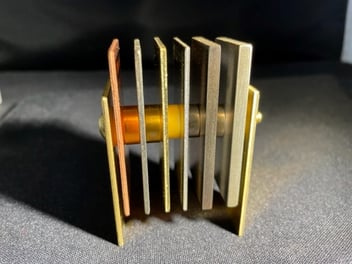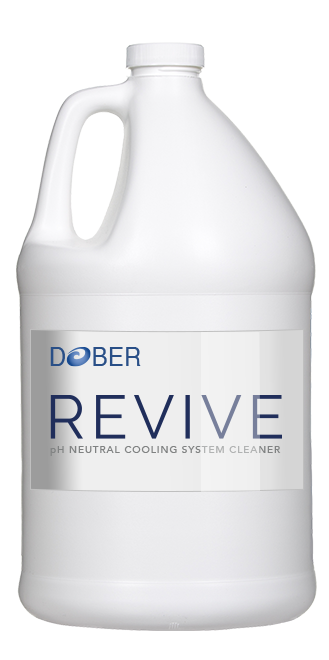Metal Cleaning Chemicals
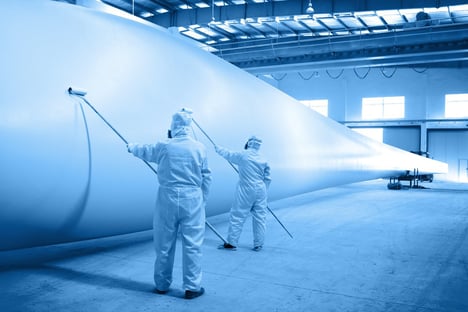
Do you see flash rusting after using a water-based metal cleaner or do you encounter staining on aluminum that was just cleaned with a high alkaline metal cleaner? If you do, then, you know that water-based metal cleaners which are actively growing due to their superior health & safety profile, still suffer issues related to corrosion protection.
Finding new approaches to improve the rust prevention properties of water-based metal cleaners is essential particularly since users are recognizing that traditional solvent and mineral oil-based rust preventatives are in decline due to concerns about their health & safety profile. The shift to metal cleaner rust preventatives is on to meet end-user needs for environmentally friendly cleaners that can also protect against corrosion.
GROWING USE OF WATER-BASED METAL CLEANERS
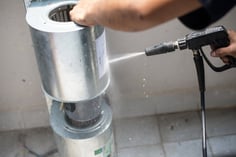 Metal cleaners are an important contributor in the overall manufacturing of parts for use in such applications as durable goods (such as washing machines), automobiles, and airplanes. Metal parts need to be cleaned after undergoing previous operations such as machining and to prepare for subsequent finishing operations such as painting.
Metal cleaners are an important contributor in the overall manufacturing of parts for use in such applications as durable goods (such as washing machines), automobiles, and airplanes. Metal parts need to be cleaned after undergoing previous operations such as machining and to prepare for subsequent finishing operations such as painting.
Poor cleaning will adversely impact the paint-ability of the metal part and is a major cause of painted part defects. The selection of the appropriate metal cleaner is based on the metal substrate and the type of soils that are present on the parts. A significant challenge is to use a metal cleaner that does not cause any damage to the metal substrate being cleaned.
Traditionally, solvent cleaners based on chlorinated hydrocarbons such as trichloroethylene were used. They proved to be very effective in removing organic soils and very quickly left the metal parts due to their volatility. But, this volatility, flammability, and health & safety concerns have led to their phase-out over 25 years ago.
To simulate the action of solvents, water-based cleaners need to be formulated with components such as builders, chelating agents, and surfactants to exhibit comparable performance while displaying a better health & safety profile. A large number of options enables water-based cleaners to be designed to remove specific soils and be compatible with subsequent finishing operations. They are also compatible with many washer designers (spray, immersion, etc.).
The most widely used metal cleaners are alkaline based because they are cost-effective and very efficient at removing heavy greases and organic soils. Users of water-based metal cleaners have flexibility in also having the opportunity to use acidic cleaners and neutral cleaners.
THE PROBLEM: CHALLENGES TO MINIMIZE RUST AND ALUMINUM STAINING
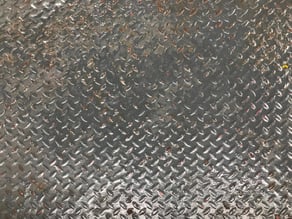 While water-based alkaline metal cleaners have proven to be effective, their use has led to some difficulties particularly with minimizing aluminum staining. This cleaner type is formulated with strongly basic components such as sodium hydroxide and sodium metasilicate which increase the pH of the cleaner to between 10 and 13. At that high pH range, the oxide coating that typically protects aluminum is not present, leaving the metal surface exposed to the alkalinity of the cleaner.
While water-based alkaline metal cleaners have proven to be effective, their use has led to some difficulties particularly with minimizing aluminum staining. This cleaner type is formulated with strongly basic components such as sodium hydroxide and sodium metasilicate which increase the pH of the cleaner to between 10 and 13. At that high pH range, the oxide coating that typically protects aluminum is not present, leaving the metal surface exposed to the alkalinity of the cleaner.
Highly alkaline exposure to aluminum will lead to the formation of undesirable staining that can be white, black, or grey. The issue of aluminum staining is becoming more prevalent because of the growing use of this metal in applications such as automobiles. The incentive is that the automotive industry is using aluminum to reduce vehicular weight to meet more demanding fuel economy requirements.
One option is to move from a highly alkaline to a neutral metal cleaner that exhibits a pH between 6 and 8. A reduction in the pH will not just reduce the chances for aluminum staining but is also more environmentally friendly and user friendly. Highly alkaline cleaners tend to cause dermatitis (skin irritation) problems with users.
Neutral metal cleaners are not as effective in the removal of organic soils as alkaline cleaners leading the industry to find the right combinations of surfactants and builders that will work at a lower pH. One other issue that also becomes important is how to deal with the growing possibility of rust formation due to the lower efficacy of conventional water-based rust preventatives such as amine salts of carboxylic acids (for example, the triethanolamine salt of oleic acid) at lower pH.
The move towards more user-friendly cleaners is placing more stress on selecting the right type of rust preventative. Water-based metal cleaners in close proximity with metal surfaces will always lead to the strong possibility of rust unless protective measures are taken. One viable option is to formulate water-based metal cleaners with rust preventatives.
DRIVERS FOR METAL CLEANER RUST PREVENTATIVES
Demand for metal cleaner rust preventatives will increase for the following reasons. The high alkalinity of many water-based metal cleaners and the lack of effective rust preventatives increases the likelihood of rusting or staining occurring on metal substrates that are undergoing cleaning. This challenge makes it imperative that new rust preventative options be made available to minimize the formation of rust even under challenging operating conditions. Therefore, demand for including rust preventatives in metal cleaners will increase not only for this reason but for additional reasons:
- A reduction in production cycles will enable end-users to reduce their reliance on traditional solvent and oil-based rust preventatives because the time between operations on a specific metal part will decline and end-users have established better storage conditions that reduce the possibility of rust formation.
- Solvent and oil-based rust preventatives display outstanding performance over long operating time frames that can last for years. But the health & safety profile for these rust preventatives is poor which will eventually lead to their use being discontinued. Solvent-based rust preventatives that rely on fast-drying also exhibit high VOCs which is a concern in regions such as Southern California.
- Metal cleaner rust preventatives meet a requirement for a more cost-effective approach for manufacturing which is significant because improving efficiency is critical. End users will be able to use the same fluid for metal cleaning and rust prevention in the same application.
- More environmentally friendly metal cleaner rust preventatives will be developed that provide excellent cost performance and flexibility. This will enable them to be used under a variety of operating conditions which includes applications that involve a wide range of metal alloys, both ferrous and non-ferrous.
POTENTIAL USES FOR METAL CLEANER RUST PREVENTATIVES
Metal cleaner rust preventatives have the flexibility to be used in multiple applications. A few examples are listed below.
- Demonstrates the ability to remove a wide range of organic soils (grease, hydraulic and lubricant oils, motor oil, etc.) while protecting ferrous and non-ferrous metal surfaces in manufacturing applications.
- Protects ferrous and non-ferrous metal parts after manufacturing processing and cleaning for up to 12 months in both indoor and outdoor applications.
- Well formulated to protect cleaned metal parts held in temporary storage between processes either indoors or outdoors.
- Adept at preventing multi-metal or galvanic corrosion by protecting metal surfaces that may come into contact with different alloys.
- Effective when used in parts washing operations that involve a number of processes including pressure washers, spray washers, immersion washers, steam cleaners, and dip tanks (hot or cold).
- Proficient in cleaning and protecting equipment that may be used during specific seasons of the year (lawnmowers, recreational equipment, snowmobiles, etc.)
- Versatile to be used in cleaning and protecting closed systems (boilers, piping, tanks, etc.) that may temporarily not be used.
DESIRED PROPERTIES FOR METAL CLEANER RUST PREVENTATIVES
Metal cleaner rust preventatives must provide the required rust protection needed but also not interfere with the overall function of a water-based metal cleaner. Desired properties are listed below:
- Compatibility with the major components in a metal cleaner including the surfactant, builder, chelating agents, hydrotropes, and biocides.
- Does not interfere with the performance of the water-based metal cleaner.
- Ability to protect a variety of metal alloy substrates that are undergoing cleaning. Including ferrous and non-ferrous alloys. This protection should last for a prescribed time frame that may last as long as 12 months in outdoor applications.
- Flexibility to operate under a wider range of pH conditions than cover neutral and alkaline cleaners (pH – 6 – 14).
- Ability to be effective at a wide range of temperatures that can range as low as 30 – 40 C and as high as 50 – 80 C.
- The metal cleaner rust preventatives must be stable under a variety of water quality conditions. Water hardness and conductivity can vary by region and water is not necessarily purified by end-users. A rust preventative must be stable under water hardness conditions as high as 1000 ppm.
- Produces a soft residue on a metal substrate that can easily be removed when necessary. The residue must not be sticky or tacky and must not attract dirt or duct to the metal substrate.
ENVIRONMENTAL BENEFITS OF WATER-BASED METAL CLEANER RUST PREVENTATIVES
The move towards water-based and away from oil and solvent-based rust preventatives continues due in part to environmental benefits. This trend is encouraged by the desire for users to do their cleaning at lower temperatures and not deal with the hazards faced in using traditional cleaners.
Key environmental benefits for water-based metal cleaner rust preventatives are shown below:
- More user friendly because water-based rust preventatives do not generate undesirable VOCs, minimize undesirable odors, and reduce health & safety concerns for workers. This makes for a much safer work environment and also reduces the generation of hazardous waste that increases cost savings.
- Eliminates any concern about flammability that can occur in solvent and oil-based rust preventatives because the main solvent used is water.
- Will provide added flexibility to users so they can adapt their process to lower temperatures and tailor their process to be used with a wide variety of washer designs (e.g., spray, immersion, ultrasonic, etc.). These steps improve productivity and increase cost savings.
- Provides users the opportunity to utilize green water-based metal cleaners
THE SOLUTION: A RUST PREVENTATIVE ADDITIVE PACKAGE
The wide range of operating conditions faced by metal rust preventative cleaners demands that a new approach be made to give users the flexibility to tailor a product for a specific application. Dober offers a unique answer.
A Range of Rust Preventative Additive Packages
Through knowledge of specific rust preventative components that are available, Dober now offers a line of rust preventative additive packages that will enable a metal rust preventative cleaner to deal with almost any condition that might be encountered. These additive packages will enable you to optimize the cost performance of the rust preventative.
To tailor a solution for you, Dober will work with you to answer these questions:
- What metals (ferrous and non-ferrous) are being cleaned?
- What soils are on the incoming parts that are to be cleaned?
- What type of rust protection (indoor or outdoor) will be required?
- How long will rust protection be required?
- What is the quality of the water being used (hardness)?
- What is the desired pH of the rust preventative cleaner (neutral or alkaline)?
- What is the operating temperature during cleaning?
- What environmental and disposal concerns must you handle?
- What finishing steps will be done on the metal parts?
Dober is excited to work with you to develop the right type of rust preventative additive package to meet your needs. Please provide a sample of your cleaner formulation and answers to the aforementioned questions and Dober will respond with a recommendation for a rust preventative additive package to use which includes a suggested starting treat rate.



